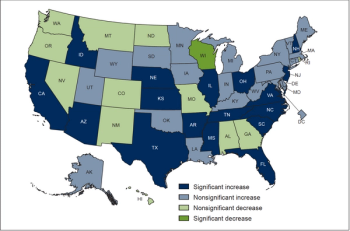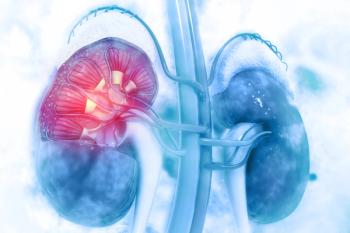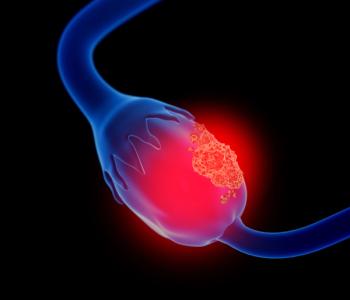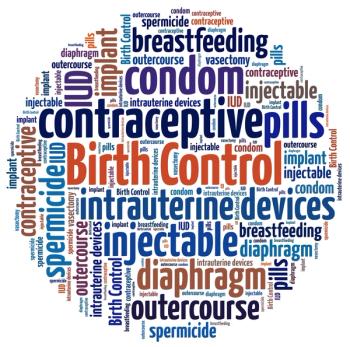
Results from a longitudinal study suggest that bacteria in the cervicovaginal microbiome (CVM) may play a role in risk of progression of high-risk human papillomavirus (HR-HPV) to cervical precancer.
Judith M. Orvos, ELS, is an editorial consultant for Contemporary OB/GYN.

Results from a longitudinal study suggest that bacteria in the cervicovaginal microbiome (CVM) may play a role in risk of progression of high-risk human papillomavirus (HR-HPV) to cervical precancer.

A new systematic review and meta-analysis suggests that women with inflammatory bowel disease (IBD) may be at increased risk of adverse pregnancy outcomes such as gestational diabetes mellitus (GDM) and preterm premature rupture of membranes (PPROM).

“Black Maternal Health Momnibus Act of 2020” is led by Senator Kamala D. Harris (D-CA) and Representatives Lauren Underwood (IL-14) and Alma Adams (NC-12).

Rates of vaginal birth after cesarean (VBAC) in the United States are on the rise, but the Healthy People 2020 goal for the marker-18.3%-isn’t likely to be reached for another 10 years, according to a new report from the Centers for Disease Control and Prevention (CDC).

The National Institutes of Health has released a comprehensive set of guidelines for the treatment of COVID-19, which includes recommendations for the care of pregnant women.

In a new letter, researchers from Wuhan Children’s Hospital in Wuhan, China, have provided insights on early-onset SARS-CoV-2 infection in neonates

Results of a very large cohort study underscore the need for routine screening of kidney function and detection of acute kidney injury in all women hospitalized during pregnancy.

Results of a new Scottish study suggest that delivery after 37 weeks’ gestation is optimal for uncomplicated twin pregnancies.

A randomized trial involving a simulated clinical encounter suggests that physician gender and race may not significantly affect patient satisfaction with or confidence in physicians.

Results of new research led by Australian investigators suggest that interleukin-6 (IL-6) may have a role in diagnosis of ovarian cancer-but not on its own.

Six medical societies have formed a new organization to enhance communication about genetics and pregnancy.

Findings from JAMA Network Open indicate that a magnetic resonance imaging (MRI)-based system could be effective for assessing adnexal masses that are indeterminate on ultrasonography.

Giving adolescents same-day access to long-acting reversible contraceptives (LARC) in a Medicaid setting may save insurers money, according to results of a new economic evaluation.

A new study examines whether reproductive hormones influence immune response to influenza vaccination.

Marking its third anniversary of working to improve the wellbeing of American mothers, March for Moms rallied on the National Mall in Washington, DC, on May 11.

A meta-analysis of 140 studies by investigators from the Cochrane Collaboration shows that oxytocin may not be the best choice for prevention of postpartum hemorrhage, despite the current recommendation from the World Health Organization (WHO). PLUS: Commentary on the findings from our Maternal Mortality Series Editor, Carolyn Zelop, MD.

Analysis of data from more than 50 million pregnancy-related hospitalizations shows that more needs to be done to identify new mothers at high risk for heart failure (HF) before they leave the hospital. Plus: Incidence of occult cancer during benign gynecology surgery is low but not insignificant. Also: According to a recent study, nearly 5% of non-pregnant women of childbearing age experience major depression, but less than half of those patients use antidepressants.

An analysis of data from the National Immunization Survey-Teen (NIS-TEEN) 2015 shows that parental concerns about human papillomavirus (HPV) vaccination are gender-specific.

Interim data from two studies of a dapivirine vaginal ring-DREAM and HOPE-lend further credence to the potential benefits of using the device for HIV prevention. Plus: FDA authorizes direct-to-consumer BRCA1/BRCA2 test. Also: A new Zika virus test extends window for accurate diagnosis.

According to research, the size of a woman’s hips and waist may be the best indicators of her risk of a heart attack. Plus: Adverse risks of pregnancy over 40. Also: Active surveillance of CIN2 is a viable treatment, according to a study.

A first-of-its-kind prospective study by researchers from Australia shows that women who have operative deliveries may be at increased risk of dyspareunia during the postpartum period.

The 7th annual March of Dimes Premature Birth Report Card shows that in 2013, the preterm birth rate fell to its lowest in 17 years-11.5%--meeting Healthy People 2020 goals. That number, however, still earns a “C” grade from the organization, which has set a goal of 9.6% of all live births by 2020.

Published: January 28th 2015 | Updated:

Published: November 14th 2014 | Updated:

Published: April 3rd 2018 | Updated:

Published: April 17th 2018 | Updated:

Published: March 6th 2018 | Updated:

Published: March 13th 2018 | Updated: